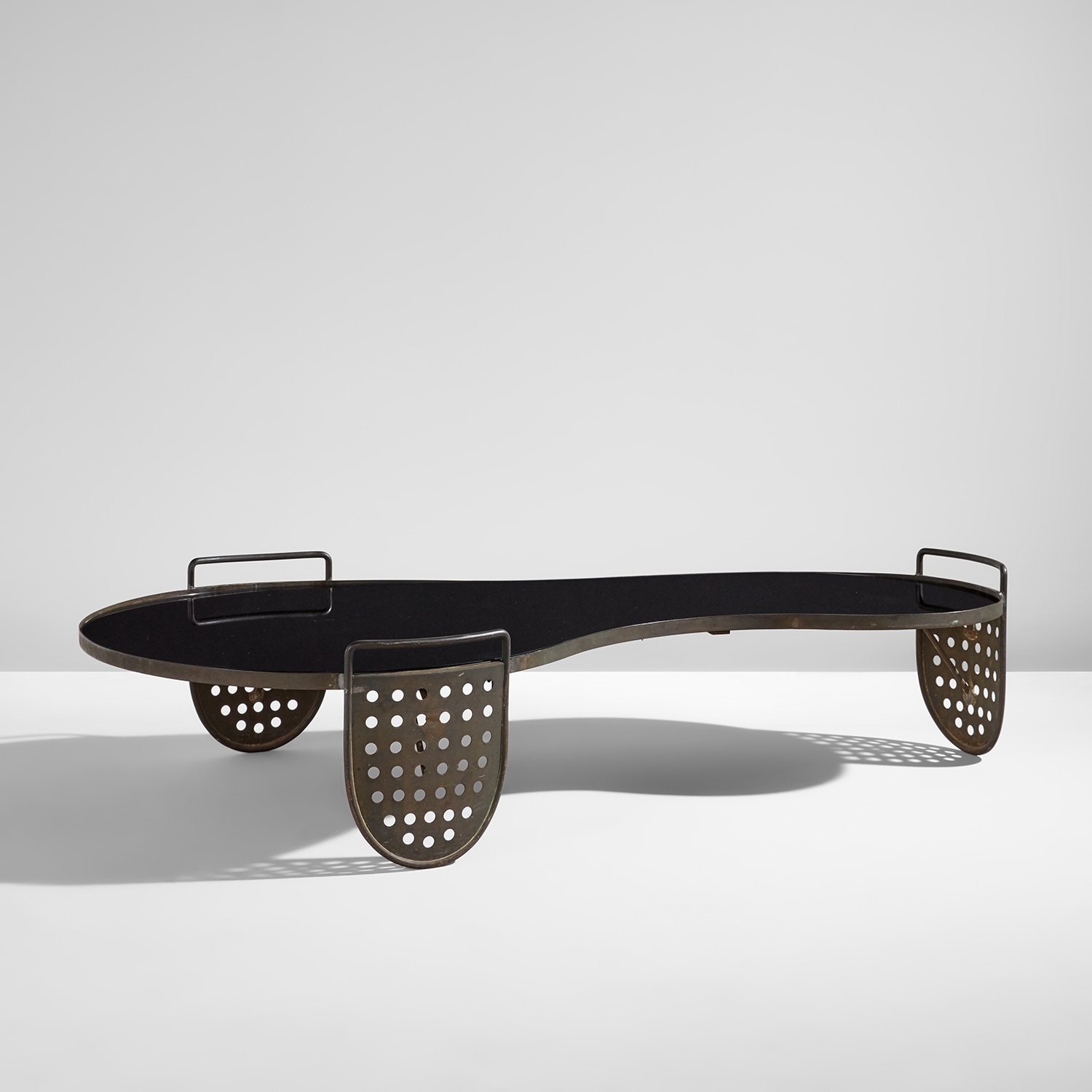





9
Jean Royère
"Flaque" coffee table
Further Details
Full-Cataloguing
Jean Royère
French | B. 1902 D. 1981Jean Royère took on the mantle of the great artistes décorateurs of 1940s France and ran with it into the second half of the twentieth century. Often perceived as outside of the modernist trajectory ascribed to twentieth-century design, Royère was nonetheless informed by and enormously influential to his peers. Having opened a store in Paris in 1943 before the war had ended, he was one of the first to promote a new way of life through interior decoration, and his lively approach found an international audience early on in his career.
In addition to commissions in Europe and South America, Royère had a strong business in the Middle East where he famously designed homes for the Shah of Iran, King Farouk of Egypt and King Hussein of Jordan. The surrealist humor and artist's thoughtful restraint that he brought to his furniture designs continue to draw admiration to this day.